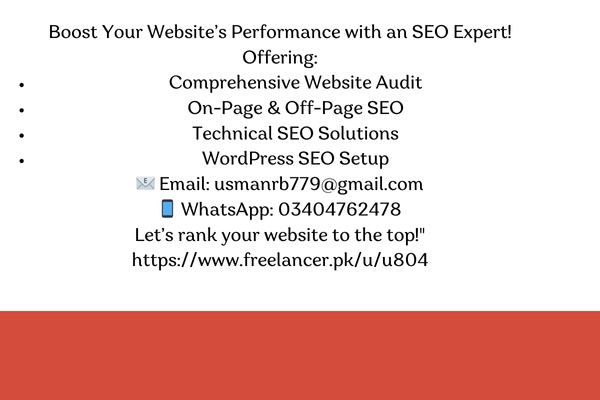The Advantages and Disadvantages of Artificial Intelligence
Published: 12 Dec 2024
Artificial Intelligence (AI) has revolutionized various industries, from healthcare to finance, education, and beyond. Its transformative power has the potential to streamline processes, enhance decision-making, and even make life easier.
However, despite its many benefits, AI also presents a range of challenges and limitations. In this article, we’ll explore both the advantages and disadvantages of AI, providing a balanced view of this game-changing technology. The Advantages and Disadvantages of Artificial Intelligence
What is Artificial Intelligence?
Before we dive into the pros and cons, let’s briefly define what Artificial Intelligence is. At its core, AI refers to the simulation of human intelligence in machines. These machines are designed to learn from experience, adapt to new inputs, and perform tasks typically requiring human intelligence. From recognizing patterns in data to understanding natural language, AI technologies rely on algorithms, machine learning, and neural networks to solve complex problems. What is Artificial Intelligence and How is it Used
Examples of AI:

- Voice Assistants: Siri, Alexa, and Google Assistant.
- Self-Driving Cars: Vehicles that use AI to navigate without human intervention.
- AI in Healthcare: Diagnosing diseases, predicting patient outcomes, and even robot-assisted surgeries.
Advantages of Artificial Intelligence
Artificial Intelligence (AI) has had a profound impact on various industries, bringing transformative benefits across business, healthcare, education, and even our daily lives. AI technologies such as machine learning, natural language processing, and robotics are revolutionizing how tasks are performed, improving efficiency, decision-making, and overall productivity. Let’s delve into the detailed advantages of AI:
Automation of Repetitive Tasks
One of the most significant advantages of AI is its ability to automate repetitive and mundane tasks. These are often tasks that don’t require human creativity but instead rely on consistency and speed. By offloading these duties to AI, businesses can save time, reduce costs, and minimize human error. How Technology is Changing
Example: In the manufacturing sector, AI-powered robots can handle repetitive tasks such as assembly, packaging, or quality control. These robots can work tirelessly, 24/7, without needing breaks or rest.
In offices, AI tools can automate processes such as data entry, calendar scheduling, and document organization.
Benefit: Automation frees up human workers to focus on higher-value, creative, and more strategic work.
Enhanced Decision-Making
AI can process vast amounts of data far more efficiently than humans, enabling businesses to make better, faster, and more informed decisions. This ability to analyze complex data sets allows for more accurate predictions, improved risk management, and the ability to detect trends and patterns that might otherwise go unnoticed.
- Example: In finance, AI algorithms are used to predict stock market trends and assist in making investment decisions by analyzing historical data.
- In healthcare, AI-powered diagnostic tools analyze medical images and patient data to assist doctors in making more accurate diagnoses and treatment decisions.
- Benefit: AI improves the accuracy of decision-making by identifying patterns and trends that human analysts might miss, thus reducing the risk of error.
Increased Efficiency and Speed
AI systems are designed to work at a speed and efficiency that far surpasses human capabilities. Whether it’s processing large volumes of data, handling customer queries, or performing complex calculations, AI does these tasks quickly and with minimal error.
Example: In customer service, AI-powered chatbots can provide instant responses to customer inquiries, 24/7, ensuring that customers don’t have to wait for human agents to become available.
In business operations, AI tools can automatically adjust inventory levels, schedule maintenance, or optimize delivery routes, all in real time, significantly improving operational efficiency.
Benefit: The speed and accuracy of AI enable businesses to operate at a much higher level of productivity and responsiveness, saving time and costs.
Personalization and Customer Experience

AI excels at understanding consumer behavior and preferences, which allows companies to offer personalized experiences to their customers. By analyzing past behaviors and interactions, AI can recommend products, content, or services that are tailored to the individual user.
Example: Streaming services like Netflix and Spotify use AI to recommend movies, TV shows, or songs based on a user’s viewing or listening history.
In e-commerce, AI-powered recommendation engines suggest products that a customer is more likely to buy, based on their browsing history, purchases, and preferences.
Benefit: Personalization increases customer satisfaction, encourages engagement, and boosts sales, as consumers are more likely to respond positively to recommendations that align with their preferences. artificial intelligence guide
Continuous Improvement and Learning (Machine Learning)
AI, particularly machine learning (ML), has the ability to learn and improve over time. Through exposure to more data, AI systems can adjust and optimize their algorithms, leading to more accurate results and better performance. This self-improvement enables AI systems to become more effective as they gain more experience and handle more data.
Example: In natural language processing (NLP), AI systems like Siri or Google Assistant improve their understanding of user queries as they are exposed to more diverse speech patterns and dialects.
In fraud detection, AI systems continuously learn from new transaction data, improving their ability to identify fraudulent activities and prevent financial losses.
Benefit: The ability to learn from new data ensures that AI systems remain relevant and accurate as they adapt to changing environments and evolving user needs.
Cost Reduction
While the initial setup and implementation of AI can be expensive, the long-term cost savings it offers are substantial. By automating routine tasks, optimizing processes, and reducing human error, AI can lead to significant cost reductions for businesses.
Example: In manufacturing, AI-powered robots can handle labor-intensive tasks, allowing businesses to reduce labor costs and improve overall production efficiency.
In customer service, AI reduces the need for human agents to handle simple inquiries, enabling companies to provide 24/7 support with minimal staffing costs.
Benefit: The cost savings derived from AI adoption can make businesses more competitive and profitable, especially in industries where operational efficiency is key to success.
Innovation and Creativity
AI is not just about automating tasks or making decisions — it is also being used to drive creativity and innovation in various industries. AI tools can assist in designing products, creating art, generating music, and even writing content. While AI doesn’t replace human creativity, it acts as an enabler, helping individuals and businesses unleash new ideas and possibilities.
Example: In fashion, AI algorithms can analyze market trends and customer preferences to create new designs or predict future fashion trends.
In entertainment, AI systems are being used to generate realistic graphics, create new video game characters, and even compose original music.
Benefit: By augmenting human creativity, AI allows for the development of innovative products and services that might not have been possible otherwise.
Better Healthcare Outcomes
AI has transformative potential in healthcare, where it can lead to better outcomes for patients through early diagnosis, personalized treatment plans, and more efficient healthcare management. AI can analyze medical records, detect abnormalities in medical imaging, and even predict disease outbreaks.
Example: AI-powered diagnostic tools, such as those used for radiology, can detect early signs of cancer or heart disease in medical images, allowing for faster intervention and treatment.
AI can also help personalize treatment plans by analyzing a patient’s genetic makeup, lifestyle, and medical history to recommend the most effective therapies.
Benefit: AI-driven advancements in healthcare have the potential to improve patient care, reduce treatment costs, and save lives.
Enhanced Security
AI is also making strides in the field of security, helping organizations better protect their data, systems, and physical assets. AI systems can detect unusual patterns, identify potential threats, and respond to security breaches in real time.
Example: In cybersecurity, AI is used to monitor network traffic for anomalies, detecting potential threats such as malware or phishing attacks before they can cause harm.
In physical security, AI-powered surveillance systems can recognize faces and identify suspicious behavior, alerting security personnel to potential threats.
Benefit: AI enhances both digital and physical security, helping businesses and individuals stay protected from a variety of threats.
Environmental Impact
AI is increasingly being used to help combat environmental challenges and drive sustainability efforts. AI technologies are being applied to optimize energy consumption, reduce waste, and monitor environmental changes such as climate change and deforestation.
Example: AI is used to improve the efficiency of solar panels and wind turbines, making renewable energy sources more cost-effective and sustainable.
AI models can predict climate change patterns, allowing policymakers and organizations to take proactive steps toward mitigating its impact.
Benefit: AI offers innovative solutions to help protect the environment, contributing to a more sustainable future.
Disadvantages of Artificial Intelligence

Despite the many benefits, there are also several limitations and concerns related to the use of AI. Let’s take a closer look at some of the drawbacks:
Job Displacement
One of the most significant concerns regarding AI is the potential for job displacement. As AI continues to automate tasks, there is fear that it could lead to widespread unemployment, particularly in sectors like manufacturing, customer service, and transportation.
Example: Self-driving cars could displace millions of truck drivers and delivery workers, while AI-driven chatbots could replace customer service agents.
Lack of Human Creativity and Emotional Intelligence
While AI can process information and make decisions based on data, it lacks the ability to think creatively or display emotional intelligence. Human decision-making often relies on emotions, intuition, and creativity, which AI cannot replicate. This makes AI less effective in fields that require empathy or abstract thinking, such as art, literature, or counseling.
Example: AI can generate artwork or music, but it lacks the emotional depth and storytelling abilities of human artists.
Bias and Discrimination
AI systems are trained on large datasets, which can sometimes include biased or incomplete data. If AI is trained on biased data, it can perpetuate existing stereotypes or discriminatory practices. This is particularly concerning in areas like hiring, law enforcement, and healthcare.
Example: In hiring, AI algorithms have been shown to unintentionally favor male candidates over female candidates if the training data reflects gender bias.
Security and Privacy Concerns
As AI systems collect and analyze vast amounts of personal data, there are concerns about privacy and security. If AI systems are hacked or misused, they could lead to significant breaches of privacy, identity theft, and even surveillance.
Example: AI-powered facial recognition systems, if used improperly, could infringe on individuals’ privacy rights or be exploited by malicious actors.
High Costs of Implementation
Implementing AI technology can be expensive, especially for small businesses or startups. The development of AI systems requires significant investment in hardware, software, and human expertise. While AI can save money in the long run, the initial costs can be prohibitive for many organizations.
Example: Developing custom AI solutions for businesses can cost millions of dollars, making it difficult for smaller enterprises to compete.
Conclusion
Artificial Intelligence is undoubtedly one of the most transformative technologies of the modern era, offering numerous benefits across various industries. From automating repetitive tasks to driving innovation in healthcare, AI has the potential to improve efficiency and decision-making in ways we could only dream of a few decades ago.
However, AI also presents several challenges, including the potential for job displacement, bias in decision-making, and concerns around security and privacy.
1. Multiple Choice Questions
- What is one primary advantage of artificial intelligence?
a) AI systems can perform repetitive tasks without error.
b) AI systems require constant human monitoring.
c) AI lacks the ability to analyze data.
d) AI systems are always more ethical than humans. - Which of the following is a disadvantage of artificial intelligence?
a) AI is scalable and can work 24/7.
b) AI often leads to job displacement.
c) AI systems make decisions without bias.
d) AI eliminates all risks in complex processes. - What is a key benefit of using AI in healthcare?
a) It ensures personal privacy.
b) It can diagnose diseases faster and more accurately.
c) It reduces the need for skilled professionals.
d) It guarantees error-free decisions in all cases. - Which of these is NOT an application of artificial intelligence?
a) Autonomous vehicles
b) Predictive analytics
c) Cloud storage services
d) Natural language processing
2. True or False
- AI can make decisions without any human intervention.
(True/False) - Artificial intelligence is entirely free from biases.
(True/False)
3. Short Answer
- Name one sector where AI has made significant improvements and explain its impact briefly.
- Why is the potential job displacement caused by AI a concern? Provide one reason.
- What is one way in which AI can enhance productivity in businesses?
4. Critical Thinking
- Do you think the benefits of AI outweigh its disadvantages? Why or why not?
Proudly powered by WordPress






